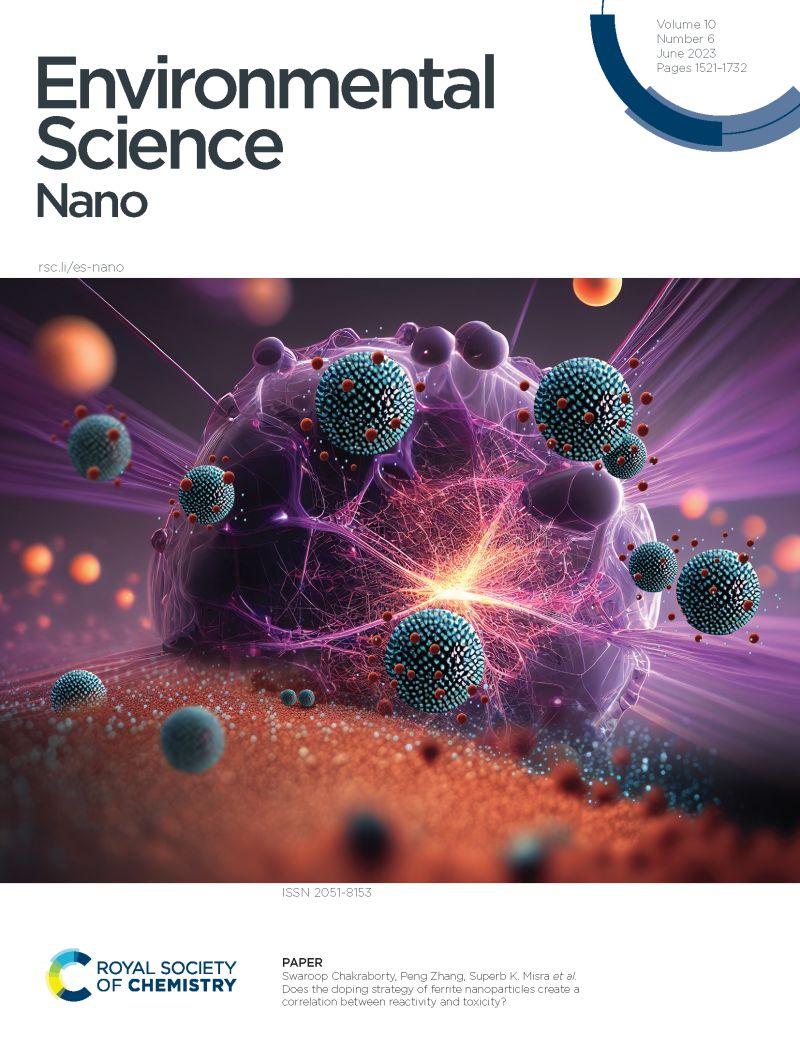Cu(II) Traceability in Industrial Samples: Innovating Detection with Modified Nanoparticles and Magnetic Electrodes
IF 5.8
2区 环境科学与生态学
Q1 CHEMISTRY, MULTIDISCIPLINARY
引用次数: 0
Abstract
This paper presents a novel approach for the sensitive detection of Cu(II) ions in acidic industrial samples, used in the manufacture of printed circuits. The study outlines the synthesis and functionalization of Fe3O4 magnetic nanoparticles, emphasizing the optimization of parameters affecting Cu(II) concentration measurements. The NPs are surface-modified with APTES and succinic acid and characterized through different methods including TEM imaging and FTIR analysis. A method employing the magnetic NPs for bulk preconcentration of Cu(II) ions, followed by collection using a simple and home-made magnetic glassy carbon electrode (MGCE), is detailed. The electrochemical analysis showcases the efficiency of the proposed method for rapid and sequential measurements of Cu(II) ions adequate for industrial matrixes. Results demonstrate the potential of this approach for sensitive Cu(II) sensing, offering a cost-effective and efficient alternative to conventional analytical techniques. Notably, the successful quantification of Cu(II) concentrations in a real sample obtained from an acid industrial electroplating bath of CuSO4 highlights the practical applicability of the developed methodology.工业样品中的 Cu(II) 可追溯性:利用改性纳米粒子和磁性电极创新检测方法
本文介绍了一种灵敏检测印刷电路制造过程中酸性工业样品中 Cu(II) 离子的新方法。研究概述了 Fe3O4 磁性纳米粒子的合成和功能化,强调了影响 Cu(II) 浓度测量的参数的优化。研究人员用 APTES 和琥珀酸对 NPs 进行了表面修饰,并通过不同的方法(包括 TEM 成像和傅立叶变换红外分析)对其进行了表征。文中详细介绍了一种利用磁性 NPs 对 Cu(II)离子进行批量预浓缩的方法,然后使用简单的自制磁性玻璃碳电极(MGCE)进行收集。电化学分析展示了所提议的方法在快速、连续测量工业基质中铜(II)离子方面的效率。结果表明,这种方法具有灵敏传感 Cu(II)的潜力,是传统分析技术的一种经济高效的替代方法。值得注意的是,从酸性 CuSO4 工业电镀槽中获得的真实样品中 Cu(II)浓度的成功定量突出了所开发方法的实际应用性。
本文章由计算机程序翻译,如有差异,请以英文原文为准。
求助全文
约1分钟内获得全文
求助全文
来源期刊

Environmental Science: Nano
CHEMISTRY, MULTIDISCIPLINARY-ENVIRONMENTAL SCIENCES
CiteScore
12.20
自引率
5.50%
发文量
290
审稿时长
2.1 months
期刊介绍:
Environmental Science: Nano serves as a comprehensive and high-impact peer-reviewed source of information on the design and demonstration of engineered nanomaterials for environment-based applications. It also covers the interactions between engineered, natural, and incidental nanomaterials with biological and environmental systems. This scope includes, but is not limited to, the following topic areas:
Novel nanomaterial-based applications for water, air, soil, food, and energy sustainability
Nanomaterial interactions with biological systems and nanotoxicology
Environmental fate, reactivity, and transformations of nanoscale materials
Nanoscale processes in the environment
Sustainable nanotechnology including rational nanomaterial design, life cycle assessment, risk/benefit analysis
 求助内容:
求助内容: 应助结果提醒方式:
应助结果提醒方式:


